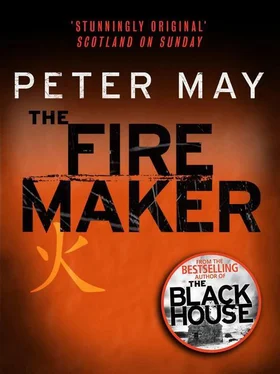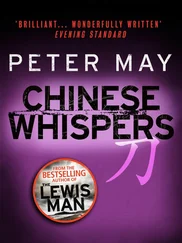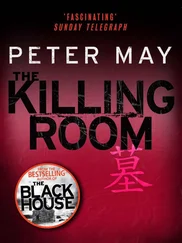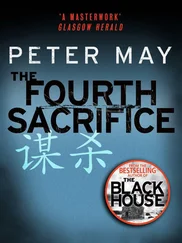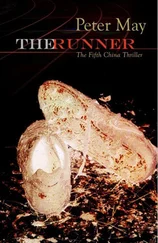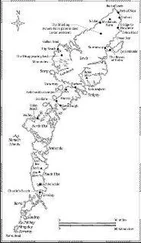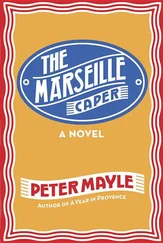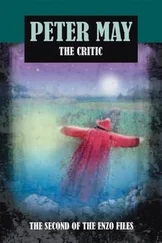Once, at his school, it had boiled over. A bully, the biggest boy in his year, was mercilessly baiting one of the juniors, a soft boy with a deformed hand of which he was crushingly self-conscious. He was almost hysterical with shame and embarrassment at the bully’s cruelty. A crowd had gathered, the way that crowds do, scared, fascinated, glad that it wasn’t them. Li broke through the circle of boys and told the bully to stop. The boy was not used to being challenged. He turned, wild-eyed, and demanded to know who the hell Li thought he was. Li said, ‘I am Li Yan. And if you do not stop I will break your skull.’ And he meant it. And the bully saw in his eyes that he meant it. But he was trapped by his own weakness. He could not back down without losing face. So Li had to crack his skull. He was in hospital for nearly two weeks and Li was visited by the juvenile delinquency officer and almost expelled from his school. But no one ever bullied the boy with the deformity again, not while Li was around. And Li had never had to fight anyone else again since.
So he knew that this girl was wrong. He was not made for better things. He was made to be a policeman, and to Li that was the very best thing he could be. He had never regretted coming to Beijing, and the last he heard the girl he walked by the canal with had married the bully whose skull he’d cracked. He had smiled, for the bully was weak, and she was strong and would mould him into whatever she wanted.
Margaret, he noticed now, was scribbling in a notebook whatever was being relayed to her across the ether. She nodded and smiled and hung up the phone, tearing the page out of the notebook before coming through. She handed it to Li, a gleam in her eyes. ‘Chao Heng,’ she said. ‘That’s the name of your John Doe through there.’ She jerked her thumb towards the autopsy room. ‘About ninety-nine per cent certain.’
Li looked at the piece of paper. She had scribbled, Chao Heng, graduated microbial genetics, University of Wisconsin, 1972 .
He looked up at her in astonishment. Professor Xie said, ‘How can you possibly know this?’
She held up the ring. ‘In the States, there’s a tradition among university graduates. To mark the occasion they have special graduation rings made that bear the crest of their university. In this case, the University of Wisconsin.’ She handed the ring to Professor Xie. ‘You can see the crest carved in the stone. Even if it hadn’t actually said University of Wisconsin on it, I’d have known the university because…’ Li saw a cloud, like a cataract, come across her eyes and the skin darken around them. ‘… because someone I knew well graduated from there.’ The moment was past, and she was back on her roll. ‘The thing is, they very often get them engraved on the inside. A name, a date, initials. In this case, if you look carefully, the initials C.H. and the date, 1972.’
Professor Xie peered at the engraving and passed it to Li.
‘We’re lucky it wasn’t completely melted.’ She shrugged. ‘So fate was kind to us. Anyway, it’s half past ten at night over there, so I couldn’t call the university. I did the next best thing; spoke to a friend on the Chicago force. He goes on-line to the Internet, pulls up the alumni register for Wisconsin, and checks out the initials on all the graduates from ’72. There’s only one Chinese name with the initials C. H. Chao Heng. Graduated in microbial genetics.’
Li clenched his fist around the ring, a gleam in his eye which when he turned it on her might have held a hint of admiration, albeit grudging. She felt a flush of pleasure. She remembered reading something somewhere, once, a very long time ago. She knew it was Chinese. ‘Women hold up half the sky.’ She shrugged it off as if it were nothing.
Li raised an eyebrow, and she saw pure mischief in those dark eyes. ‘Ah,’ he said. ‘You are quoting from Mao Zedong.’ She nodded. So that’s who had said it. ‘Of course,’ Li continued, ‘he meant the lower half of the sky.’
There was a moment’s stand-off, before a wide grin slashed his face. It was irresistibly infectious, and she found herself smiling back when what she really wanted to do was punch him. She turned to Professor Xie. ‘Professor, if I may, I would very much like to assist you in the autopsy. I am sure there is much I could learn from an experienced pathologist like yourself.’ Credentials established, she had no problem with restoring Professor Xie’s mianzi .
He responded immediately with a small, dignified bow. ‘It is my pleasure,’ he said.
‘There is extensive thermal injury, with fourth- and third-degree burns over greater than ninety per cent of the body surface, with scattered second-degree burns. Portions of the scalp and virtually all of the scalp hair are charred away, with the exception of a small amount of singed, coarse, straight black hair averaging three centimetres in length on the left side of the head. The facial features are not discernible. The nose is absent, as is the right ear. The left ear is shrivelled and charred. The eyes are not recognisable. The teeth are partially charred, but are in excellent repair, with multiple amalgam fillings and porcelain crowns. The maxilla and mandible will be retained for future dental comparison. The skin and soft tissue of the right cheek are charred away and there is char fracturing of the right zygoma. The tongue is protruding slightly; the tip is charred, and there is a small amount of white froth about the mouth. No facial hair is identified.’
Lily’s protestations that she was no longer required had been ignored, and she stood shivering at the back of the autopsy room beside Li, hardly daring to watch as Margaret made her preliminary examination of the body. Margaret measured and weighed, describing her findings as she went for the benefit of an overhead microphone. The recording of the entire proceeding would later be transcribed for the autopsy report.
She and Professor Xie had gone off earlier to change, returning swathed in layers of clothing; green surgeon’s pyjamas covered by plastic aprons, in turn covered by long-sleeved cotton gowns. Both wore plastic shoe covers on their feet and shower caps on their heads. Wondering what had drawn her to such a macabre profession, Li had watched with involuntary fascination as Margaret pulled on a pair of gloves, slipping plastic sleeve covers over her freckled forearms to cover the gap between sleeve and glove. She had drawn a steel-mesh glove over her left, non-cutting, hand, and snapped on a second pair of latex gloves over the lot. The post-mortem mutilation of a human being was a messy business.
As both surgeons had pulled up their face masks and lowered goggles over their eyes, two assistants had wheeled in the charred body of Chao Heng on a gurney and transferred it to the autopsy table. Lily had let out a small gasp. His upper body was still frozen in the defensive attitude of the boxer, as if preparing to fight off any attempt to cut him open. The chill air of the room had been suffused immediately with a smell like overcooked steak on a grill, an insidious odour that crept into the soul via the too-sensitive medium of the olfactory nerves.
The assistants had placed covers on the floor beneath and around the table to collect the fine charcoal dust that Margaret had warned would settle all around them and track across the room as they moved back and forth dissecting organs for later microscopic examination. Professor Xie, although nominally the lead pathologist, now that mianzi was restored had deferred to Margaret’s greater experience and asked her to perform the autopsy while he assisted.
Now, as she examined the feet of the corpse, she found and pulled back a piece of black and stiffened material from the top of the left foot. ‘The charred remains of what appears to be a leather shoe and part of a sock are present over the dorsum and the sole of the left foot and the sole of the right foot. There are no remaining identifying features, other than that the left shoe appears to have been of a laced variety. The skin of the dorsum of the left foot is dark red and blistered and there is an apparent needle track in the skin in the area of the saphenous vein and venous arch.’
Читать дальше
